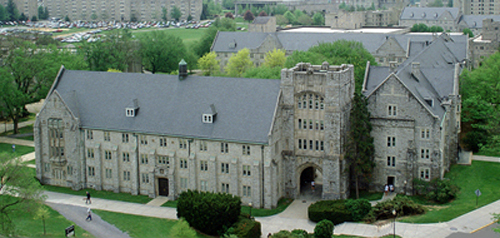|
As Virginia's superintendent of public instruction and later as president of Virginia Agricultural and Mechanical College and Polytechnic Institute (popularly called VPI, now Virginia Tech), Joseph D. Eggleston Jr. forged enduring progressive changes, not just on the Blacksburg campus, but also throughout the commonwealth.
Born in Prince Edward County, Va., Eggleston was a schoolteacher, school superintendent, editor, and Southern Education Board employee before becoming, in 1906, Virginia's first elected superintendent of public instruction, a position he held until 1913. He was, said U.S. Commissioner of Education Philander P. Claxton, a man of "high ideals, indomitable energy, and unusual administrative ability" who, according to Edward F. Overton in "A Study of the Life and Work of Joseph Dupuy Eggleston Jr.," "apparently did not fear any consequences or political opposition whatever."
The push for rural education
As superintendent, Eggleston emphasized rural education and supported a system of public high schools and compulsory attendance. He successfully pushed to add agricultural education and home economics to high school instruction and was instrumental in getting Extension started in Virginia.
As president of VPI from 1913 to 1919, Eggleston found ways for the college to develop and expand farm demonstration work. Even before passage of the 1914 Smith-Lever Act, which moved Extension under the auspices of land-grant colleges, he was planning demonstration-work training sessions on campus. Following passage of the act, he became the first acting director of Virginia's Cooperative Extension Work in Agriculture and Home Economics, and the program blossomed under his guidance.
The push for women's rights
A progressive man, Eggleston helped expand opportunities for women in Virginia and helped create the Cooperative Education Association of Virginia, which promoted higher education for women. In 1911, he placed his beliefs on the line by joining the Equal Suffrage League of Virginia.
While in VPI's top office, Eggleston maintained a somewhat conservative image, although he was the first president to encourage and accept women as students, even if they could only attend summer courses to learn about demonstration work. As Leslie Ogg Williams writes in her master's thesis, "Eggleston's actions provided the wedge for white women to attend VPI, and [Julian A.] Burruss [who succeeded Eggleston as president] pried it fully open."
|


